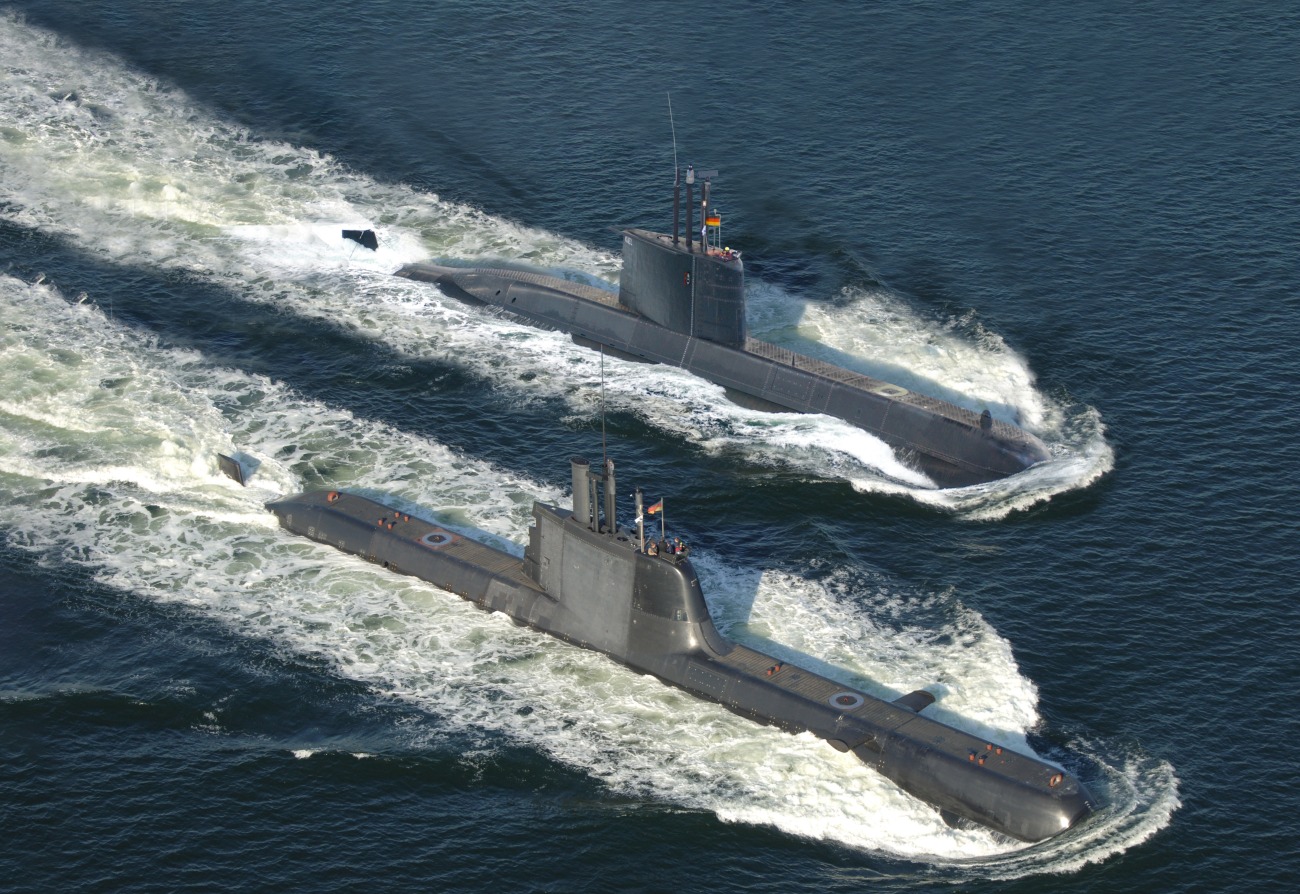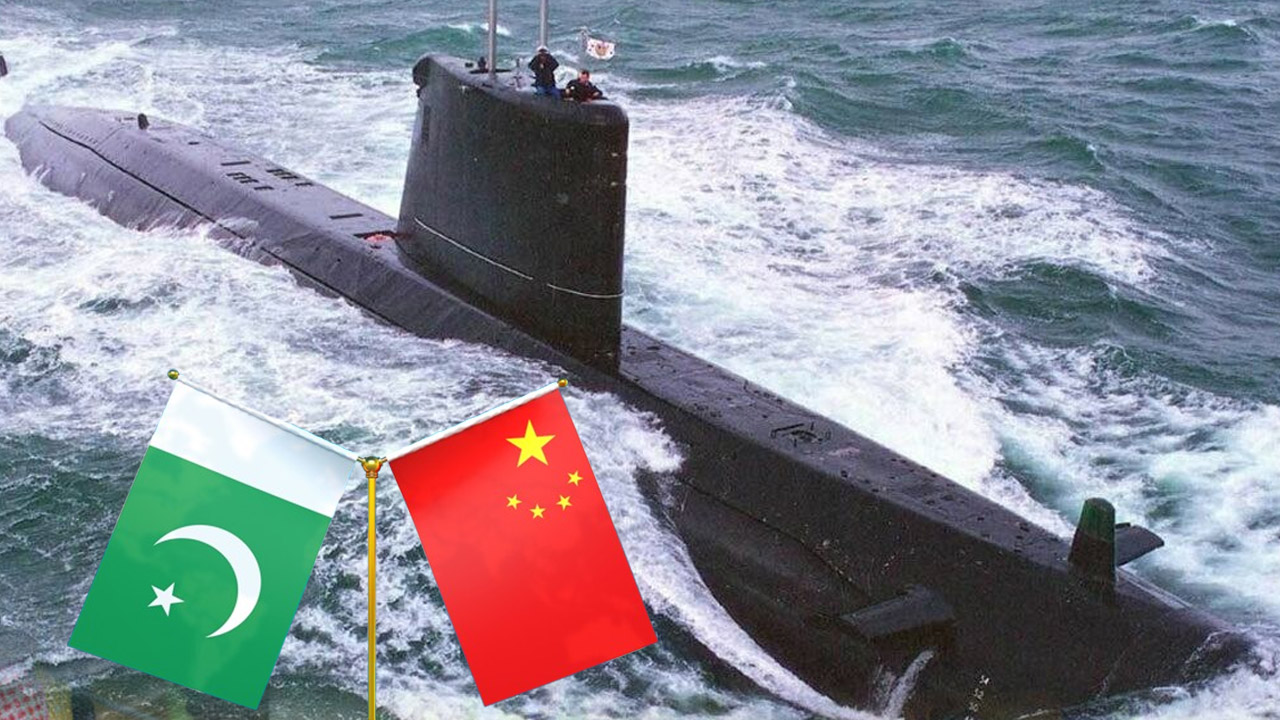In the coming decade, the Indian Ocean Region will be teeming with Air-Independent Propulsion (AIP)–equipped submarines belonging to the Indian and Pakistani Navy.
The Pakistan Navy expects to soon receive the Chinese-built Hangor class submarines (an export variant of China’s Type 039B Yuan class submarines).
For India, the Scorpene class submarines are expected to be retrofitted with an indigenously developed AIP system. Along with this, India has reached the last stages of finalizing the deal to build 6 AIP submarines within the country in partnership with German shipbuilder Thyssenkrupp (TkMS).
India has already rejected the bid of Spanish Navantia in favor of Thyssenkrupp for Project-75I. The team of TkMS will be arriving in India soon to conduct financial negotiations. TkMS has partnered with Indian Mazagon Dockyard Ltd (MDL), and the submarines will involve considerable technology transfer.
Pakistan once coveted the Thyssenkrupp AIP system. However, Germany refused to give the AIP tech and engine for the Hangor class submarine.
The EurAsian Times compared the two sub-surface platforms in detail.
Experts consider the Type 214 offered by Germany to India to have “superior technology” to the Hangor class submarines. At the same time, they see the collaboration between Pakistan and China as a long-term threat.
Pitting Type 214 Against Hangors
The German Type 214 submarines have a submerged displacement of 1,860 tonnes, and its length is 65 meters. The Hangor class has a submerged displacement of 2250 tonnes and is 74.9 meters long.

In simpler words, the Hangor Class submarines are heavier than Type 214, especially when submerged. But, the Chinese submarines are faster both on the surface and submerged.
The Chinese submarines are powered by German MTU 12V 396 SE84 diesel engines. However, the submarines being built for the Pakistan Navy will have the Chinese CHD-620 diesel engine.
The Type 214 submarines have a more advanced AIP system, allowing them to stay submerged longer without surfacing. The combination of a fuel-cell-based AIP system and Lithium-Ion battery will bring a game-changing capability for the Indian Navy, which has a long area of responsibility straddling from the Gulf of Aden in the West to the Strait of Malacca in the East.
In the face of the growing Chinese maritime capability, the Indian Navy requires a credible submarine force.
The Fuel-cell AIP gives the submarine long-range endurance at low speed, whereas the Lithium-ion battery allows it to cruise at high speed to reach its desired destination. The German shipbuilder will be integrating the two technologies for the Indian Navy.
Type 214 submarines can dive deeper than Hangor Class submarines. Siemens polymer electrolyte membrane (PEM) hydrogen fuel cells allow the German submarine to dive deeper.
The Type 214 submarines are in service with several other navies, and the one offered to India will be tailored to the user’s requirements. It will be a derivative of the 214 class of submarines, with the latest enhancements in AIP technology. It will be equipped with a Lithium-ion battery, have an advanced sensor and combat system, and not compromise on stealth features.
TkMS describes Type 214 as a proven Fuel Cell air-independent propulsion (AIP) featuring increased diving depths, a modular weapon, and a sensor suite for deep sea and littoral water operations.
“The submarine has a reliable and efficient propulsion motor for operational superiority while emanating very low signatures during long undersea dives. These boats have larger weapon payloads with torpedoes, missiles, and an integrated Torpedo Countermeasures (TCM) system,” Commander Milind Kulshreshtha, a retired Indian Navy officer and C4I expert, told the EurAsian Times.
China has been developing the Hangor class for export, and China’s turbulent relationships with the West have resulted in restrictions on military technology exports.
“Undoubtedly, India, through the German Type 214 suitably modified as per Indian Navy specs, shall be acquiring a superior technology when compared to Pakistan’s Hangor class submarines,” he added.
Also, the hydrogen-powered fuel cell-based AIP technology in the new 212 and 214 class submarines allows them to remain submerged for three weeks at a time.
Apart from the AIP tech, another advantage of the 214 submarine class is its stealth. It can operate silently without emitting exhaust heat, increasing its stealth. Fuel cells offer the lowest noise levels because almost no sound is produced by an electro-chemical reaction.
It can launch torpedoes stealthily with a water ram expulsion system. It also comes with countermeasures against torpedoes like underwater effector jammers and has minimized acoustic, thermal, and magnetic signatures to provide more stealth.
Yuans feature Stirling generator type AIP. There have been reports that the newer Yuan-class submarines might have Lithium-ion batteries, but there has been no confirmation.
“Hangor are the Chinese Type 039s. The German boats are far superior in technology, stealth, and capability. The Chinese had promised German engines in their subs to Thailand and Pakistan. Thailand has refused a submarine with Chinese engines, but Pakistan may not have a choice,” a retired Indian Navy submariner said, requesting anonymity.
The Type 039C is the latest design of the Yuan class of Chinese submarines, and its photos were clicked by a fisherman in 2023. Defense commentators on Weibo said the Type 039C was likely to carry torpedoes and the YJ-18 supersonic anti-ship cruise missiles, which have an operational range of up to 340 miles.
Very little information is available about China’s new Type-039C Yuan submarines. The upgraded Type 39C has a stealth sail to reduce detectability.
The Chinese submarine is a one-of-a-kind vessel currently operational with an angled sail. The use of angled stealth shaping is gaining momentum. The Swedish A-26-class and Germany’s Type-212CD-class will incorporate similar features, even encasing the whole submarine in an angled outer hull.
It remains to be seen if the Hangor class submarines will incorporate the upgrades of the Type-039C.
Hangor Class Submarines – A Threat To Regional Geopolitics
As per the current progress, the Hangor submarines are expected to join the Pakistan Navy by the late 2020s and early 2030s. Upon completion, the submarines will join the Pakistan Navy’s fleet, taking the strength of its AIP-equipped boats to 11.

In December 2021, the fifth Hangor-class conventional submarine, also the first one to be built in Pakistan, had the steel cutting ceremony.
These submarines are equipped with advanced sensors and modern armaments, which slightly tilts the tactical power balance in favor of Pakistan. These diesel attack submarines align with the Pakistan Navy’s offensive sea denial strategy, which prioritizes using submarines and missile-carrying maritime patrol aircraft in naval warfare.
“Pakistan is ever looking to enhance its anti-access and area-denial (A2/AD) capabilities by acquiring warships like Chinese Type 054A for improved Anti-air Warfare (AAW), long-range surface missile capabilities, and the ASW offensives. In the future, Pakistan’s operational Hangor class submarines shall enhance Pakistan’s A2/AD capabilities multi-fold,” Commander Kulshreshtha opines.
But he adds that the Hangor class program holds “a far significant threat in regional geopolitics.”
“Apart from the relevance of these being AIP advanced submarines, the joint-partnership between China Shipbuilding Industry Corporation (CSIC) and Pakistan shipyard carries a long-term threat. While the initial boats are to be built and exported by China, the later submarines are to be locally built in Pakistan and shall carry a critical enhancement to launch nuclear missiles, bringing in a serious underwater capability with the adversary to counter,” he added.
Despite being cash-strapped, Pakistan is matching the prowess of the Indian Navy ship by ship. As the only Indian Navy-operated port in the country is coming to life and set to become the largest naval base east of the Suez Canal, Pakistan has also accelerated its efforts to have one of Asia’s largest naval fleets by enlarging its surface fleet to 50 warships along with a subsurface fleet of 11 submarines.
Of the 50 surface ships the Pakistan Navy aspires to operate, 20 are expected to be “major surface vessels” like frigates and corvettes.




